Blog
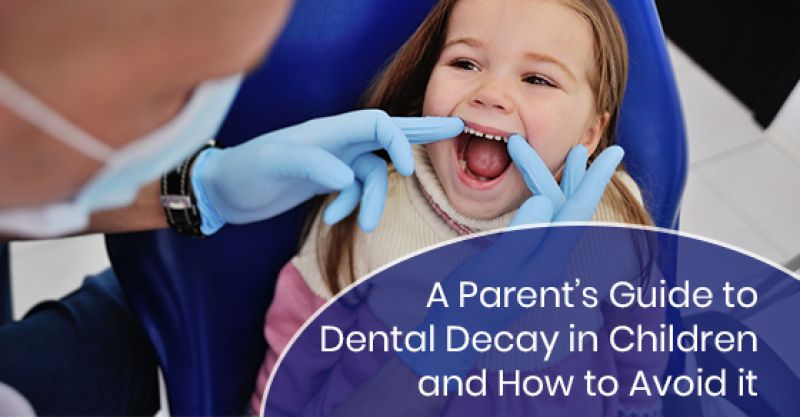
You might think that dentists sound like broken records when they say that daily brushing and flossing must be supported by periodic visits to the dentist for regular cleanings. But the fact is, there aren’t enough reminders in the world to drive this point — and it’s especially important for your little ones. That’s because instilling good oral hygiene habits in their formative years can lead to lifelong prevention of tooth decay, cavities, gum disease, and a world of other dental issues.
Anyone can develop tooth decay at any age without proper dental care, but kids who are in their primary stages of development and just acquainting themselves with cavity-causing sweets are at higher risk for dental decay. That’s why it’s important not just to get them in the habit of brushing and flossing, but also to see a children’s dentist twice a year.
Here’s everything you need to know about tooth decay and how it affects the mouth in general; plus, we’ll offer our best tips for dealing with tooth decay and preventing it from happening:
It’s All in the Mouth
The mouth is where it all starts; so much food and drink pass through the mouth, leaving it constantly exposed to dangerous bacteria. For children especially, sugary foods combined with poor oral hygiene habits put them at high risk of dental decay. It only takes one decaying tooth to affect the rest of the mouth, so it’s important to get it treated at the first sign.
We might not realize it, but the mouth harbours a lot of bacteria, and without proper oral hygiene and regular dental cleanings, the unhealthy atmosphere can quickly promote dental decay and diseases. That’s why it’s best to schedule regular cleanings for kids at least twice a year, or as advised by your children’s dentist. Not only do thorough cleanings get rid of plaque buildup and bacteria accumulating in the mouth, but the accompanying dental exam allows your child’s dentist to spot early signs of decay and prevent them from turning into full-blown oral health problems.
How Dental Decay Develops
We already know that daily eating and drinking causes plaque and bacteria to build up in the mouth. Since these essential activities cannot be avoided, maintaining proper oral hygiene at home is the number one way to prevent this buildup.
Without proper brushing and flossing, the food particles and sugar that stick to teeth remain there. Over time, this leads to the formation of plaque, which secretes the acid that causes tooth decay. The longer that plaque is left unremoved, the more acid forms that will eventually attack the teeth. But it doesn’t end there — plaque buildup also causes the enamel on the surface of the teeth to degrade. As this happens, small holes known as cavities will form. Despite starting on the surface, dental decay spreads throughout the tooth until it infects the centre of the tooth and potentially adjacent teeth as well.
This is why it’s important to instill good oral hygiene habits in children as early as possible. Children’s dentists know all about the challenges that parents go through when teaching kids to brush and floss when they are toddlers, so getting them used to these habits even as they just start teething allows them to learn to stick to a proper routine in their formative years, all the way to adulthood.
Keep an Eye Out for Sugar
All types of food leave particles in the mouth. However, certain types of foods put kids at higher risk of developing dental decay than others.
It’s no secret that the number one enemy of a healthy diet and good dental health in kids is sugar. Sugary treats like chocolate and candy are prone to sticking to the surface of teeth, while drinks like soda are high in acid. Both cause plaque buildup, cavity formation, and eventually, full-blown tooth decay. Plus, these sugary foods are already low in essential nutrients, so children’s dentists recommend swapping them out for healthy alternatives; doing so not only leads to better prevention of tooth decay but better overall health.
Here are just some of the sugary treats that kids love but their teeth don’t:
- Soda, even diet or sugar-free options
- Candy
- Chocolates
- Cookies
- Cake
- Artificially flavoured juice
- Ice cream
- High-sugar cereal
- Crackers
Once in a while, parents can’t help but indulge their kids or reward them with these treats. While that’s perfectly normal, just make sure to keep an eye out for how much sugar they consume. It’s also important to make sure that they drink lots of water to cleanse the mouth, followed by thorough brushing and flossing to prevent sugar and acid from settling on the surface of the teeth and causing plaque buildup.
How Children’s Dentists Treat Decay
The moment your child’s dentist suspects cavities and tooth decay, they will conduct a dental exam and take x-rays to confirm the symptoms. Then, they will proceed with removing the decayed portion of the tooth and placing fillings to arrest the damage and protect the remaining healthy part of the tooth. They usually opt for tooth-coloured fillings to preserve the natural appearance; plus, this also restores your child’s bright and confident smile.
Pediatric dentists work especially hard to make this entire process comfortable for kids. The treatment area is numbed and kids are often prescribed pain medication to avoid feeling any pain or discomfort. In some cases, children can even be given a mild dental sedative to relieve their discomfort and ensure that the treatment proceeds smoothly.
Visit a Children’s Dentist
Still, the best way to maintain good oral health in kids is to take them to see a children’s dentist on a regular basis. Coupled with excellent oral hygiene at home, seeing their dentist regularly reduces the likelihood of cavities and painful toothaches. The routine cleanings and checkups also allow dentists to monitor the growth of their primary teeth until their permanent ones grow in, detect any issues, and ensure optimal growth throughout their formative years.
To learn more about dental decay and how to help your kids avoid it, call Treehouse Dental Care at 1-833-333-6623 or contact us here.
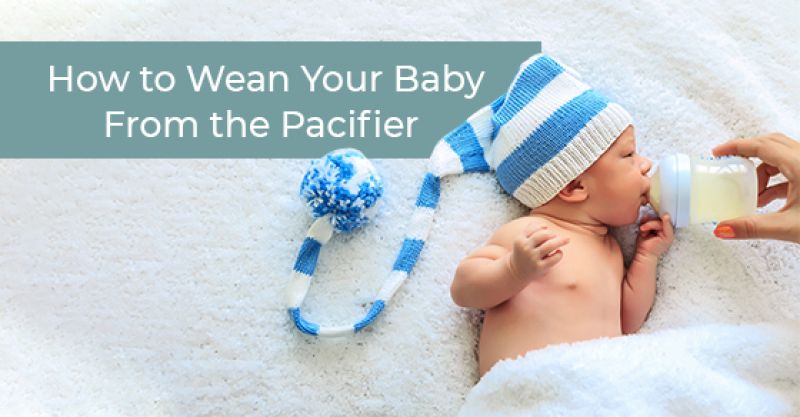
How to Wean Your Baby From the Pacifier
Babies love their pacifiers. They’re soothing, help them to relax, get to sleep, and stop fussing. But as babies get older and develop teeth, it’s time to start thinking about how to wean them off. Mainly because prolonged pacifier use can lead to slanted teeth and other oral health complications.
As your baby’s head and jaw grow, their jaw will accommodate any object whether it be a pacifier, their thumb, or any other object they use to self-soothe. If a baby sucks on their pacifier during this stage, it will affect their development. Pacifier use past infancy can cause teeth to grow on an angle which in turn leads to misalignment and bite problems. It’s hard to do, but parents need to wean their babies off their pacifiers as early as possible.
It may seem cruel to take away an object that brings comfort to your baby, but you can always substitute one comforting object for another, more importantly, one that won’t hinder their oral health. Eventually, they won’t need to soothe anymore.
Here are some methods you can take to wean your baby from their pacifier. Choose the option that works best for you and your child, and be gentle but firm. Make it clear that “big kids” don’t use pacifiers, and that giving it up means your child is being very brave and mature.
1) Cutting Down Pacifier Time
One way of weaning your baby from their pacifier is to do it gradually instead of cold turkey. To start, offer the pacifier only during naptime and bedtime when your child is winding down to sleep. Then maybe only every 2nd day, and so on. Before you know it, your baby will be happily going to sleep without it, especially if they have a replacement object.
2) Give Another Comfort Item
Most babies tend to have comfort items like a blanket or stuffed animal. When you take away your baby’s pacifier you can reduce the separation anxiety by offering an alternative object instead. A new soft toy or even just some extra cuddles should do it. Now your baby can feel safe and relaxed without the negative effects on their teeth.
3) Modify The Pacifier
By cutting a hole in the tip of your baby’s pacifier, the air will be released and it will be more difficult to suck on. Your baby may find their pacifier to be less satisfying after that and might just lose interest on their own.
4) Unpleasant Tastes
Another way of weaning your baby from their pacifier is to coat it with something that is safe and non-toxic, but that doesn’t taste very good, such as vinegar or lemon juice. Doing this, particularly if they have an alternative comfort object on-hand will likely divert their focus away from the pacifier completely.
5) Cold Turkey
Quitting cold turkey is the most distressing way of kicking a habit, but can sometimes be the most effective. The first couple of days will be the hardest for your baby, but after those initial 48–72 hours, they’ll begin to calm down. Make sure you give your baby a toy, a blanket, or a stuffed animal to substitute the comforting feeling they once received from their pacifier. Make sure to give them extra affection, maybe even a gentle massage, so they feel safe and calm.
6) Do A Good Deed
If your child is old enough to understand words and sentences, tell them there is another baby who needs their pacifier more than they do. Your child may understand the importance of doing something good for someone other than themselves. They’re giving up something they loved to benefit someone else and becoming “grown-ups”.
7) Book A Dentist Appointment
We recommend scheduling your baby’s first dental appointment when their first tooth erupts. This is around the same time they should be weaned from their pacifier. A dentist can confirm if your child’s mouth and jaw are developing properly, they can even help dispose of old pacifiers! Just bring them in a box to the dentist and let your child know that the pacifiers are being given up for a good cause. If your child feels included in the decision, they’ll be more inclined to relinquish them.
Pacifiers are a great soothing aid for infants, however, they can interfere with proper oral development. That’s why it’s necessary to wean your infant from their pacifier between the ages of six months to two years. It may seem daunting, but by using one of the methods provided, the process should go smoothly and quickly.
Treehouse Dental provides kid-friendly dental services in Toronto, Thornhill, and Etobicoke. Give us a call at (416) 922-2668 or visit our contact page here for more information or to set up an appointment.
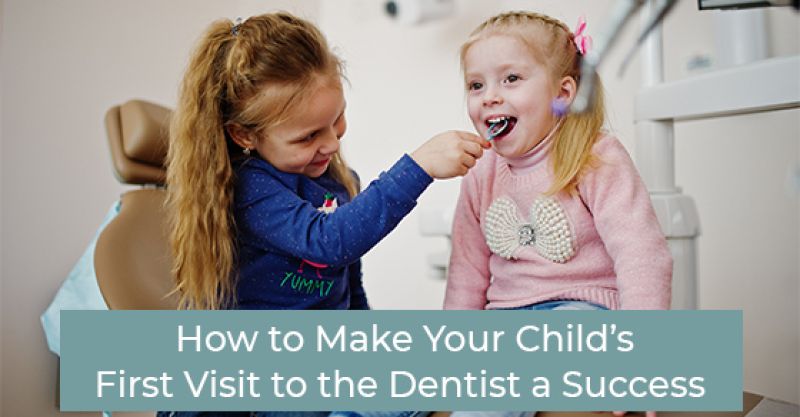
Having healthy teeth is so important, both for children and for adults. Kids are every bit as prone to oral health issues as adults, so early dental check-ups are crucial. It’s suggested that as soon as your child has two teeth beside each other, it’s time to schedule their first visit to the dentist.
Going to the dentist for the first time can be an intimidating process, but if you do some groundwork you’ll stand a much greater chance of success. You want the first time your child sees the dentist to go smoothly so they form a positive association. Even though it can be scary for kids (or even adults) to be in a clinical environment with a stranger poking around your mouth, by following our helpful tips, your child will understand the importance of these visits and what to expect.
1) Find A Pediatric Dentist
Pediatric dentists have kid-friendly setups that will make your child feel right at home. They can play in a waiting room that’s stocked with children’s books, toys, video games, and whimsical decor. The dentist’s room is tailored to children, with smaller patient chairs, dental instruments, and children’s programming playing on TV. This can make all the difference in how comfortable your child feels in the chair.
Non-pediatric clinics may accept child patients, but they can be more intimidating. Seeing few, if any, other children around can make a child feel out of place. Pediatric clinics are more comforting to children by design. It’s important that your child’s first experience at the dentist be a positive one, so their initial impression is everything. Locating a reputable pediatric dental clinic is one of the most impactful steps you can take towards ensuring your child’s first dentist appointment is a success.
2) Pick A Good Time
Parents know there are “good” times of the day, and times when kids are less open to trying something new. Naptime, meal times, or when they have a recreational activity all come to mind. When booking your child’s first dentist appointment, make sure they won’t be dragged away from their routine. Your child will be more enthusiastic about their appointment if they’re not missing lunch or their after-school soccer game to go to it.
3) Talk To Your Child
Have a kid-friendly conversation about what will happen at the dentist before you get to the appointment. Let your child know that a dentist is someone who makes sure our teeth are clean and healthy – they’re on our side! Using positive, kid-friendly language around teeth can help them make the connection between teeth and overall health.
You can watch TV shows, read books and sing songs about going to the dentist to raise morale. The more you familiarize your child with the terms and concepts of dentistry, the less nervous they’ll be during their appointment.
4) Have Good Practices At Home
Once your child’s first tooth erupts, it’s a good idea to establish a preliminary dental hygiene routine. Brushing the single tooth and gums with a wet, soft-bristled toothbrush can help dislodge food, debris, and sugars; keeping your child’s mouth nice and healthy. If there are two teeth side by side, show your child how to floss using proper technique.
With a good home dental routine established, your child will already be well on their way to a healthy mouth. When they sit in the dentist’s chair, their dentist will surely notice the hard work they’ve put in. This will shorten the length of the cleaning and your child will be happy to receive positive feedback.
5) Extra Comfort
If your child is a toddler, or if they’re nervous about the dentist, they can sit on your lap during the appointment. This will reassure them that you’re there for them and keep them calm while the dentist does their job. Afterward, the dentist can give your child a reward in the form of a toy, or a kid-tailored care bag.
It’s important to get the first time right when it comes to going to the dentist. Your child’s oral health will impact their comfort, appearance, and confidence. Even though your child may still have baby teeth, the care they receive early on will have a significant impact on how their adult teeth come in. Helping establish a positive relationship between your child and their dentist is one of the best gifts you can give them as a parent.
Following these five steps for a successful first appointment will help them feel relaxed and confident. It will encourage your child to develop good self-care habits and reduce anxiety around seeing the dentist. Give them a try and see what happens!
Treehouse Dental provides kid-friendly dental services in Toronto, Thornhill, and Etobicoke. Give us a call at (416) 922-2668 or visit our contact page here for more information or to set up an appointment.
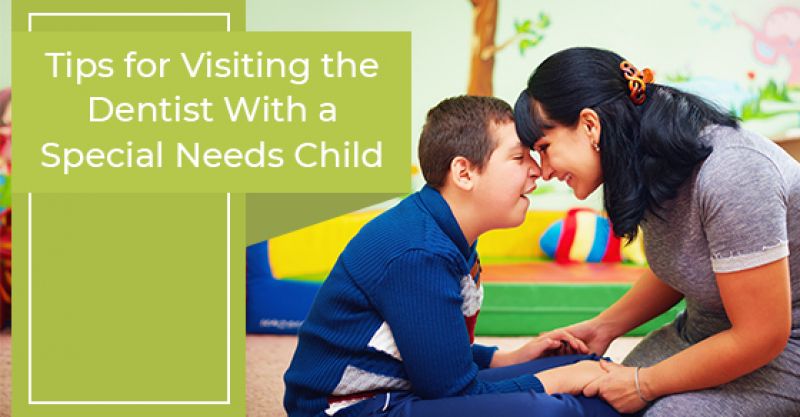
Tips for Visiting the Dentist With a Special Needs Child
Visiting the dentist is so important for preventative care. Dentists help keep on top of your child’s dental health, preventing problems before they start. But oftentimes, children are prone to nervousness when it comes to clinical environments. Children, especially those with special needs, require extra care and consideration in order to make their experience at the dentist a positive one.
Special needs children can be sensitive to new environments, strangers, loud noises, and physical touch. Still, seeing the dentist is an essential part of your child’s overall wellness and should not be avoided. To make the process easier for everyone, here are some steps to take to help your child feel more at ease.
1. Find A Pediatric Dentist
If you have a pediatric dental clinic in your area, it doesn’t hurt to get that personalized care. While most dental clinics accept both adults and children, pediatric dentists and staff are specially trained in working with kids, including ones with special needs. They have likely experienced every situation and are best equipped to prevent or handle whatever comes up.
Appointment times are long enough that kids and parents never feel rushed. There is kid-friendly programming playing on TV during the appointment, games in the waiting room, and kid-oriented care bags to take home. The dental chair is smaller and the instruments the dentist uses are specially sized for small mouths.
A kid-friendly setting with appropriately sized equipment can help special needs children feel like they’re in the right place. They’ll see other children in the waiting room instead of adults, and their dentist will know how to communicate with them in a way that will make them feel more comfortable.
Call around to find the best pediatric dentist in your area and ask them about their experience in treating special needs children. The clinic staff should instill confidence in you before you book an appointment for your child.
2. Take It Slow
A good rule of thumb to follow for special needs children is “take it slow”. Talk about the appointment way in advance, reassure your child that it will be a fun experience. This will give them time to wrap their heads around the idea. You could even take them for an initial “meet and greet” before the scheduled appointment. This will allow your child to become familiarized with the dentist and clinical setting, and help humanize the dentist. They will show your child the instruments and demonstrate how they’re used, making them less intimidating when it comes time for the actual appointment. An initial consultation is a good idea for any parent and child, not just those with special needs.
3. Make A Narrative Around The Dentist’s Office
With kids, it’s useful to spark their imagination when charting new territory. If you’re bringing them to a pediatric dentist office, or one that you know has kid-friendly perks like a game room, TV, etc. talk it up to your child and get them excited. This can help relieve anxiety, and assist with their understanding of the whole process. Start by borrowing some children’s books about visiting the dentist from the library. Whichever book series your child loves, there’s probably a story about going to the dentist. Try to find one with pictures so your child can visualize what it will be like.
You can even tell your child a story about what their own dentist visit might be like. Imagine they’re an explorer, and to get the secret treasure they must complete a quest (teeth cleaning). Your child will feel brave and excited about starring in their own adventure!
It’s very natural for a child to be nervous about seeing the dentist—after all, so are adults sometimes! With a special needs child, it might take additional effort along the way to ensure the experience goes smoothly. Choosing the right pediatric dental clinic, slowly preparing them through open communication, and building up the appointment in a fun way through anecdotes and storytelling are all useful tools to make the process more positive and prevent negative associations.
A good dental clinic will be patient and supportive throughout the process. Don’t be afraid to ask questions, and do your research when selecting where to go. Your child’s dental health rests in the hands of their dentist! With help from all parties, your child’s experience will hopefully be like that of their favourite storybook characters.
Treehouse Dental provides kid-friendly dental services in Toronto, Thornhill, and Etobicoke. Give us a call at (416) 922-2668 or visit our contact page here for more information or to set up an appointment.
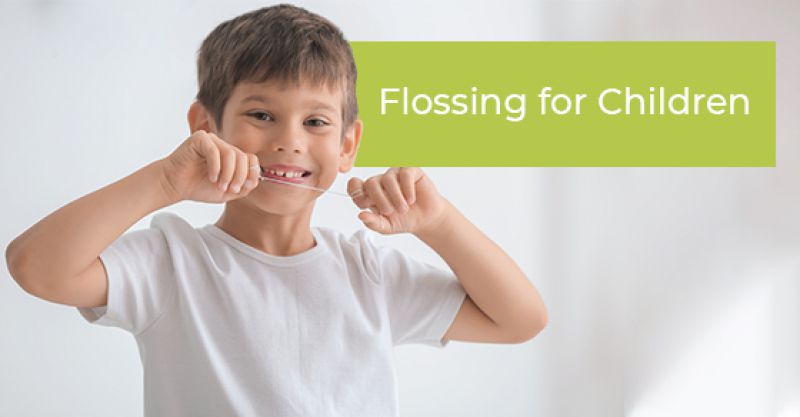
Flossing for Children
Flossing is one of the most important dental habits you can instill in your child. It might seem like a daunting task, especially in addition to brushing and mouthwash, but it’s well worth it!
Too often, we tend to skip flossing in our oral hygiene routine because we don’t know how to do it properly or feel like we don’t have anything stuck in between our teeth. But your dentist doesn’t just tell you to floss to be a pain, they have a good reason!
- Flossing helps get all the debris out from between your teeth. Brushing can only do so much.
- Without flossing, the debris trapped between teeth can decay and cause cavities.
- Flossing gets rid of plaque on teeth, giving a clean, white and healthy smile.
- Getting your child to start flossing at a young age sets them up for a lifetime of good dental habits
Step 1: Explain Why Flossing Is Important
One of the best ways to make the flossing habit stick is to thoroughly explain to your child why it’s important. Kids love to ask “Why?”, this just means they’re curious. Use language and examples they can understand for their age. Dentists recommend that you start flossing with your child as soon as neighbouring teeth come in. Even though they’re baby teeth, they’re still prone to decay and all the discomfort that comes with it.
Another effective way to relay the importance of flossing is to let them know that “all the big kids do it”. Flossing is so mature! Let your kid know that by taking this extra special step they’re demonstrating big kid behaviour, which makes you very proud and, of course, is very, very cool.
Step 2: Help Them Figure It Out
It may take a couple of practice sessions before your child gets the hang of flossing. Help them by portioning the string, looping it around their tooth, and gently pulling in a see-saw motion up and down the tooth, all the way down into the crevices. Repeat with every tooth, changing the section of floss to a clean one as they go. If they use the same section of floss the whole time then they’ll just transfer plaque between teeth, instead of removing it. Not so good!
Some kids (and adults!) find flossing tricky and uncomfortable. They might prefer to use flossing sticks instead. With these sticks, your child won’t have to put their hands in their mouth and can get the job done quicker. Just make sure they’re still doing the motions properly. Using a stick can make it harder to get into tiny crevices and do a thorough job.
Step 3: Book A Dentist Visit
You’ve done the essential groundwork at home, but it’s important for your child to see a dentist to ensure their teeth and gums are in good shape. A dentist can confirm if your child is doing an effective job at flossing, and give their mouths an extra deep cleaning.
A dentist can also help show proper flossing technique, providing a refresher for both child and parent. Your child’s dentist should communicate about oral hygiene in a friendly, non-judgemental way. Providing the right environment for your child can make the difference between them having a positive association with the dentist, or treating dental appointments as something to fear and prolong as much as possible.
Step 4: Keep It Up!
Flossing only works its magic when done regularly. Let your child know that flossing is just like brushing: it must be done twice a day, after mealtimes in order to be effective. And make sure you’re leading by example. If they see you practicing what you preach, they’ll be much more inclined to do it themselves.
Flossing is one of the most important habits to instill in your child. As soon as they have two teeth to floss together, start educating them on the importance and proper method. Your pediatric dentist will help you out in this regard, and with your combined efforts, your child will be well on their way to a lifetime habit that protects their healthy gums and teeth.
Treehouse Dental provides kid-friendly dental services in Toronto, Thornhill, and Etobicoke. Give us a call at (416) 922-2668 or visit our contact page here for more information or to set up an appointment.

Foods to Avoid If Your Child Has Braces
Braces for your child are a big investment of both time and money. Having a straight, beautiful smile will do a lot for your child’s self-esteem and self-image. It’s important they know the right foods and drinks to consume while they have braces so nothing moves out of place. Having to make extra trips to the orthodontist is annoying, and interferes with your child’s progress..
There’s a general rule of thumb to go by: if it’s sticky, hard, or acidic, don’t eat it. It might seem hard to limit all foods of this nature at first, but your child will grow used to it in no time. They’ll pick up better “braces-friendly” snacking habits.
When it comes to eating with braces, there are some foods that are worse than others and can result in brackets coming off, even from consuming them once. If you want to avoid the hassle and expense of scheduling emergency orthodontist trips, make sure to steer clear of the following foods:
Dried Fruit
Dried fruits are an unstuck bracket waiting to happen. While they may be a delicious and healthy snack in moderation, they still contain quite a bit of sugar and their sticky consistency can easily take a bracket with them when you’re chewing.
Raw Veggies
It’s funny how healthy foods can incidentally be bad for braces. Raw veggies pack such a crunch that they can actually dislodge braces. That said, veggies such as carrots, cauliflower, and jicama are best served steamed or boiled so that they are softened and can be bit into easily. Celery is especially bad for braces. Not only is it dangerously crunchy, but the “strings” in celery can also get wound up in brackets.
Potato Chips
Potato chips are crunchy, and that’s a problem, but it’s not the only reason they’re not the best snack choice for kids with braces. Starchy food sticks around in the mouth well after your child is finished eating, breaking down into simple sugars that erode enamel. This effect is exacerbated with braces or any other dental appliance. Sugars stick to the hardware, creating pockets where sugar and bacteria can fester. If your child does eat chips or other starchy or sugary foods, make sure they brush their teeth immediately afterward and use their special braces cleaner tool.
Sticky Candy
This one should be a no-brainer. Sticky candies such as caramels, tootsie rolls, suckers, taffy, or any combination of the above will quickly do a number on braces. Same as with dried fruit, sticky candy clings to brackets and is prolific at ripping them off your teeth. Sticky candy is damaging enough as it is, regardless of whether you have braces.
Nuts
Nuts! No nuts?! It may seem like all the good foods are off-limits, but bear with us. We’ll give you a list of braces-safe foods shortly.
Nuts are crunchy, and break apart into small, sharp pieces in our mouths, and can wreak havoc on brackets and bands. In fact, nuts are one of the most common foods that cause emergency trips to the orthodontist.
So, nothing hard, nothing sticky, nothing crunchy, nothing starchy, and nothing sugary. Not even raw vegetables! What is your child supposed to eat, you ask?
- Braces-friendly foods:
- Pasta with any type of sauce
- Yogurt
- Soft fruit such as bananas or grapes
- Peanut butter and jelly
- Cheese
- Light crackers or cookies
- Mashed potatoes
- Steamed or boiled veggies
- Casseroles
Focusing on what your child can have instead of what they can’t will make the whole process much easier. A lot of kids will harm their braces at some point, either by accident or by eating something that caused the break. Don’t worry about it too much; just learn and move on. Knowing the right foods to eat and which ones to avoid can be the key to keeping your kid’s braces in tip-top shape, hopefully until the treatment is finished. They’ll have a beautiful, straight smile and you’ll be spared extra dental bills. Just remember the rule of thumb: if it’s sticky, crunchy, or sugary, it’s no good for braces.
Treehouse Dental provides kid-friendly dental services in Toronto, Thornhill, and Etobicoke. Give us a call at (416) 922-2668 or visit our contact page here for more information or to set up an appointment.

The dentist’s chair can be an unfamiliar and intimidating environment, especially for children. You can explain the benefits of proper dental checkups to your child, but if they are frightened of the experience then they’ll be little inclined to listen to rational reasoning. This can mean a giant headache for everyone involved. What’s more, one bad experience can sit with them long after you’ve left the clinic and form negative associations, making the next visit all the more difficult.
If getting your child to the dentist is putting stress and anxiety on both of you, you might want to consider sedation dentistry. Contrary to popular belief, it’s not just an option for adults.
Sedation dentistry is when a dentist administers sedation to their patient to help them relieve their anxiety and get them through their appointment. Whether it’s for a routine checkup or an invasive procedure, sedation can calm nervous patients and allow the dentist to do their job faster and more efficiently.
Dentists must be accredited in order to offer sedation dentistry. When seeking out a dental clinic that performs sedation dentistry, ask them specifically about their experience in working with children. Most sedation dentistry is administered using light to moderate anesthesia, meaning the patient won’t be fully unconscious during the procedure. Still, it’s important to know how to dose any sort of anesthesia for young patients.
There are four main types of sedation that are used for dentistry:
- Inhaled Minimal Sedation. You’ve probably heard of laughing gas before. As the name states, it does make you laugh, but it also numbs pain and can make you forget the dental procedure altogether. After all, who wants to hang onto every detail of their last dentist visit? Laughing gas is technically termed Nitrous Oxide and wears off relatively quickly. In a few hours, your child will be back to their normal selves. While the effects wear off, it’s a good idea to keep the rest of their day low-key. We recommend relaxing at home.
- Oral Sedation. This involves taking a pill. It’s less invasive than Nitrous Oxide because you don’t have to wear a mask, but it can’t be dosed as precisely. Oral sedation can range from mild to moderate, depending on the type of sedation used. Your child might even fall asleep. Fear not, dentists are well-aware that this can happen and are equipped to deal with a child nodding off in their chair.
- IV Sedation. As the name implies, IV sedation is given via intravenous drip. This isn’t the best method of sedation for children; if there’s one thing kids hate more than going to the dentist, it’s getting needles. IV sedation is generally saved for more serious procedures, or for when you want a patient to be unconscious throughout.
- Deep Sedation/General Anesthesia. When patients need to be fully unconscious for a procedure, general anesthesia is most effective. This form of sedation is commonly used for surgeries in hospitals and in dental clinics. This is definitely not the first choice for minimally invasive procedures, but it’s useful when there’s more extensive work to be done. General Anesthesia takes the longest to wear off. Sometimes its effects need to be reversed with medication.
Talk to your dentist for guidelines on how to prep your child for sedation dentistry. For safety reasons, You’ll need to restrict their food intake prior to the procedure, otherwise, if a child does not have full reflexes, remaining food and drink in the stomach can be inhaled into the lungs. Also, let your child’s dentist know if they’re taking any prescription drugs. Include everything, even multivitamins. Sedation dentistry is very safe if performed by a qualified administrator, but there are always potential risks.
After sedation, pay close attention to how your child is recovering. A bit of grogginess is to be expected, but it should wear off in a few hours. Check in on their breathing to see if they’re taking full, deep inhalations. It’s better to have two adults accompany a child for sedation dentistry. One can drive home, while the other adult can stay with the child to soothe them and monitor their vital signs.
Sedation dentistry can be an alternative for anxious children to get the best dental care possible. If your child is scared of the dentist’s office and the anxiety is interfering with their routine checkups or preventing the dentist from doing a thorough job, then you may want to look into sedation dentistry. As with any medical decision, speak to a qualified professional to see if your child would be a good candidate based on their age, health, and medical history. A little bit of sedation now could prevent dental issues down the road!
Treehouse Dental provides kid-friendly dental services in Toronto, Thornhill, and Etobicoke. Give us a call at (416) 922-2668 or visit our contact page here for more information or to set up an appointment.
